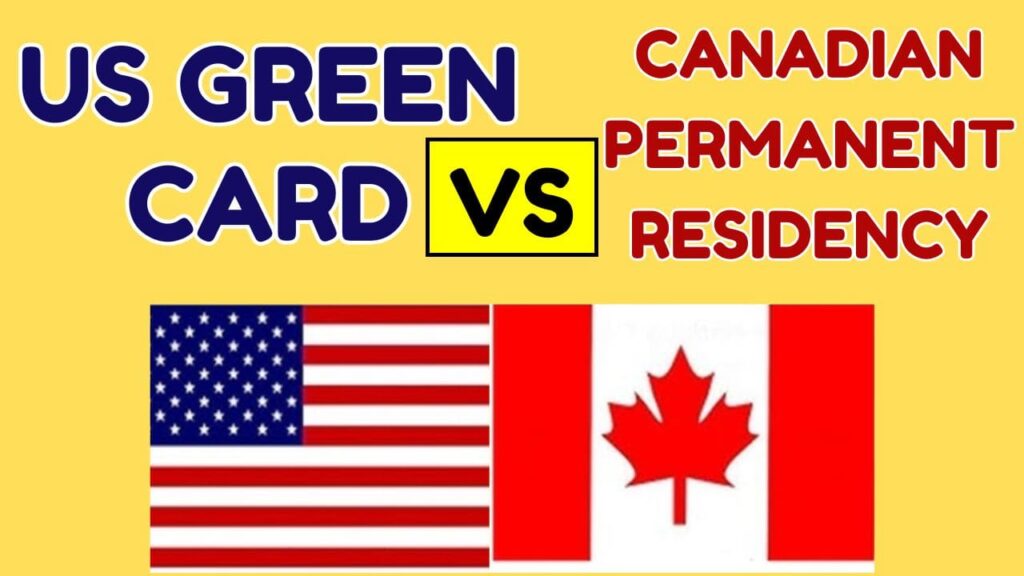US Green Card Vs Canadian Permanent Residency: Comparing the immigration laws of popular countries likes the US and Canada is crucial for Indian professionals looking to pursue opportunities in abroad. With significant variations in application procedures, success rates, and paths to citizenship, every nation provides different opportunities for skilled workers.
Pathway to Immigration for Skilled Workers
Most people agree that Canada’s immigration system is transparent and effective. The country employs a points-based system through the Express Entry program, which evaluates applicants based on their age, education, employment history, and language ability. A feature that appeals to skilled workers looking to settle down for the long term is the invitation extended to high-ranking candidates to apply for permanent residency.

- Additionally, Canada provides the Provincial Nominee Program (PNP), in which provinces choose applicants with skills that are in demand and suited to regional labor shortages. This method offers more flexibility, enabling candidates to improve their chances in accordance with local standards.
- On the other hand, one important element of the employer-driven U.S. immigration system is the H-1B visa for skilled professionals.
- It is a crucial entry point for foreign professionals since applicants must have a job offer from a U.S. employer, who then sponsors the visa.
Success Rates and Processing Times
Most applications are processed within 6 months thanks to Canada’s efficient Express Entry system. Because of the simple points-based system, applicants can quickly determine their eligibility and chances of success. Because it seeks to swiftly and predictably meet labor demands and demographic needs, Canada’s system frequently appeals to Indian skilled workers looking for a simplified route to permanent residency.
SSC MTS Answer Key 2024: इस तरह करें उत्तर कुंजी डाउनलोड, नंबर जांचे, इतने नंबर में सिलेक्शन पक्का
Permanent Citizenship and Residency
From temporary status to permanent residency and, eventually, citizenship, Canada offers a straightforward path. After obtaining permanent residency, skilled workers can access social services, healthcare, and eventually become eligible for Canadian citizenship. The nation promotes integration, and after fulfilling residency requirements and obtaining permanent residency, people can apply for citizenship. For individuals who want to make a lasting impression, this simple process is advantageous.
- Although qualified professionals can get a green card in the US, the procedure can be more involved and time-consuming.
- It is more difficult to transition from temporary work visas to permanent residency because it requires employer sponsorship, quota compliance, and a number of legal procedures.
- Before applying for U.S. citizenship, a person must reside in the country for a number of years, even after receiving a green card.
- For skilled workers seeking a quicker and more straightforward route to citizenship, this might be a crucial consideration.
बिना इस दस्तावेज के नहीं बनेगा आयुष्मान कार्ड – Documents Required to Make Ayushman Card
Current Trends in Policy
According to recent trends, Canada is implementing policies to draw in skilled professionals, such as more points for bilingual proficiency and quicker processing times, while simultaneously raising its immigration targets to address labor shortages and economic needs. Discussions about how to balance the need for housing and infrastructure with the influx of temporary residents are still going on, though, and show a careful approach to efficient resource management.
Calls for a more merit-based system akin to Canada’s have been made, but these plans are confronted with legislative obstacles. Particularly, the H-1B visa program is still up for debate, with proposals to increase caps and change the lottery system to better meet the needs of the economy.
